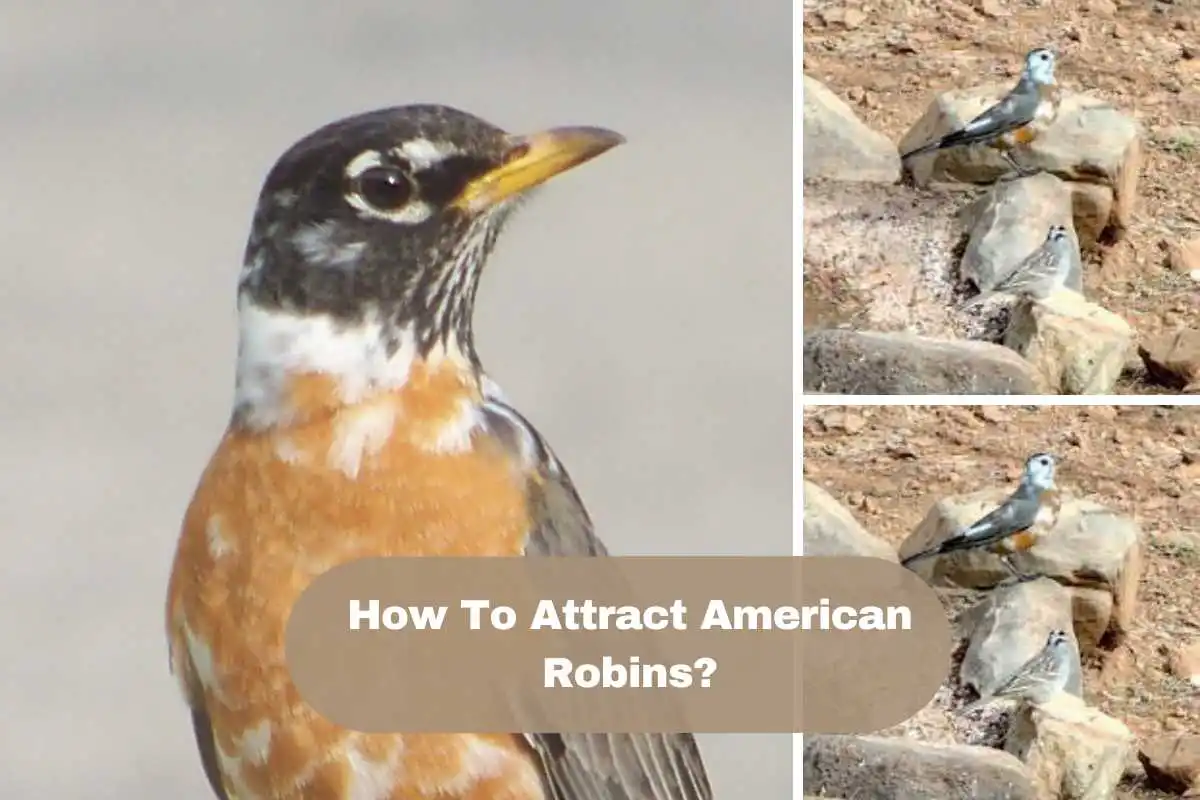The American Robin is a common bird species found throughout North America. Its reddish-orange breast, dark head, and back give it a striking appearance. However, some individuals may have white patches or spots on their plumage. This phenomenon is called leucism and is caused by a genetic condition that reduces pigmentation in feathers, skin, or eyes.
Keep reading to know in detail about the causes, impacts, and observations of American robins with white spots.
Do Robins Have White on Them?
American robins have a reddish-orange breasts and a dark head, back, and tail. However, some may have white spots or patches on their feathers caused by parasitic mites, environmental toxins, or nutritional deficiencies.
Causes Of White Spots in American Robins
American Robins are susceptible to many causes of white spots on their feathers. One possible cause is a genetic mutation that results in a rare form of albinism, where the bird lacks pigmentation in certain areas of its feathers. Parasitic mites, such as Northern Fowl Mites, can also cause problems as they feed on bird blood and feathers.
As with any living organism, the feathers of American Robins can be affected by environmental factors. For example, exposure to pesticides or other toxins can cause discoloration of feathers. Nutritional deficiencies may also lead to white spots on the feathers of American Robins. It’s important to note that not all white spots on American Robins are caused by disease or parasites; some are natural.
It’s important to report any abnormal patterns or observations of American Robins to ornithological societies or citizen science projects so that research can continue.
Impact of White Spots on American Robins
White spots on the feathers of American Robins can affect the bird’s physical health and survival. Birds with white spots may be more vulnerable to predators as their feathers provide less camouflage. Additionally, birds with white spots may have a harder time attracting mates and reproducing, which can negatively impact population numbers.
White spots on the feathers of American Robins can indicate underlying health issues, such as exposure to parasites or toxins that can further affect the bird’s survival and reproduction. Understanding these causes and impacts is important for the conservation of the species.
Observing and reporting white-spotted American Robins to local ornithological societies or citizen science projects can help scientists learn more about the birds and take steps to protect them.
What Is a Robin with A White Head?
A white-headed robin is a variation of the American Robin, which is typically known for its reddish-orange breast and white head. The bird may be caused by a genetic mutation known as leucism.
Leucism is a genetic condition that causes a reduction in pigmentation in feathers, skin, or eyes. The white patches can appear on all or parts of the bird’s feathers and skin, including the head.
However, robins with white heads are rare, and it’s important to observe and report any abnormal patterns or observations of American Robins to ornithological societies or citizen science projects for further understanding and conservation of the species.
What Causes Leucism in Birds?
Leucism is a genetic condition that causes a reduction in pigmentation in feathers, skin, or eyes. It occurs when a mutation in the gene responsible for melanin production reduces pigmentation in the affected areas.
The mutation can be inherited or occur spontaneously. It is harmless to the bird, but it can make the bird more visible to predators and affect its ability to camouflage, which increases the risk of predation.
Leucism can also affect the birds’ ability to attract mates and reproduce, which can negatively impact population numbers. However, the exact cause of leucism in birds is not fully understood and is still being researched.
Is there a difference in behavior or habitat preference between American Robins with white spots or a white head and those without?
The relationship between American Robins’ appearance and behavior is not fully understood. Studies on this topic are limited and inconclusive, but some research suggests that white-spotted or white-headed American Robins may have a harder time finding food or avoiding predators, which could lead to changes in their behavior or habitat preference. However, more research is needed to fully understand the potential differences in behavior or habitat preference between American Robins with white spots or a white head and those without.
Frequently Asked Questions About American Robin with White Spots
How Common Are White-Spotted or White-Headed American Robins?
The white-headed or white-spotted American Robin is a rare bird, and difficult to estimate its population numbers. Observing and reporting sightings of white-headed or white-spotted American Robins to ornithological societies or citizen science projects can help in understanding the prevalence of this phenomenon.
Is it harmful to approach or handle a white-spotted or white-headed American Robin?
Sometimes it can be harmful to approach and handle white-head American robin. They can have mites in their body, which can transfer to the human body. Wild birds should not be approached or handled, as this often causes stress to the bird. Additionally, taking or harming wild birds without a proper permit is illegal.
Did I Answer Your Query About American Robin with White Spots
The study of American Robins with white spots or a white head is an ongoing process that requires the participation of ornithological societies, researchers, and citizens to understand why this genetic condition exists and what it means for the bird’s population.

